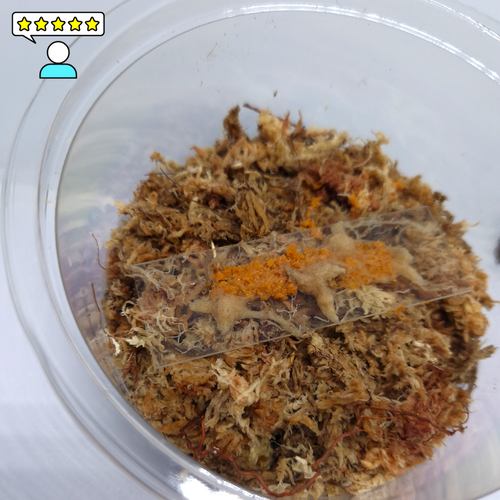
The Grindals: for which fish?
F. MattierShare
Everyone has noticed it: fish love to eat worms.
Worms, Grindal worm, enchytraeids, mosquito larvae, micro worms and anguillules for fry, etc. Everything that has the shape of a worm pleases them more than anything!

But why?
In reality, with the exception of a few special species (like the fearsome piranhas or sharks), fish do not have their teeth at the entrance of their mouth, but at the back of their throat. As a result, what they eat can only be chewed if it has managed to enter their mouth.
That's why, when we see them fail in front of a daphnia that's a bit too big for them, they spit it out and we notice that it is intact and starts swimming again as if nothing happened.
A large appetizing creature can therefore only be swallowed by a fish if its shape and size allow it to pass through its teeth, and thus its throat.

Hence the innate interest of fish in small elongated animals: their slenderness, if the fish swallows them the right way, allows them to easily pass through the oral barrier.
"That is why, for example, fry that are too small to swallow anything other than infusoria can easily gobble up vinegar eels, which are larger but very thin! Infinitely thinner, in fact, than artemia nauplii."
"That’s also why the Grindal worm, which are very easy to breed, are suitable for so many different sizes of fish. Large enough and white enough to be seen by all adult fish that love them, their fineness also allows very young fish to enjoy them. From a two-week-old guppy to adult angelfish or discus, this very attractive white worm is probably the most universal natural food in aquaristics."
A Grindal culture in full production (after a few months) gives you plenty to regularly feed your fish, from small neon tetras to large gouramis, including your juvenile livebearers who will cautiously, but very excitedly, watch for the few worms that escape the big ones!
Biologically, the Grindal belongs to the same genus as the superb enchytraeid, which is much larger and therefore less suitable for small fish.
In nature, fish often find them on the banks, where the water meets the plant litter and the humus in which Grindals like enchytraeids live.
"That is why Grindals are so easy to raise in sphagnum (untreated), like the one provided in the Zollabox Fish S, which allows you to easily start this small, discreet, space-saving, and odorless breeding at home."
To be informed about the release of future articles, be sure to sign up for the free mailing list at the bottom of this page!


1 comment
Bonjour
Effectivement il est très facile d élever ces charmantes bestioles
J en ai placé dans de l humus naturel au jardin bien au frais et bien protégé du soleil
Problème : grand espace (ancienne brouette hors d usage) et hop je ne peux plus les voir
J ai placé les autres dans la zoobox qui me sert de protège lumière (tout se recycle) et ils grouillent
Bon ensuite comme je suis un cœur d artichaut je ne les donnent pas aux poissons . On ne se refait pas , je préfère les regarder……..
Merci F. Mattier (Florian Florent Félix Fabio…,. Je cherche je cherche)
Encore un bel article
Bonne journée à tous